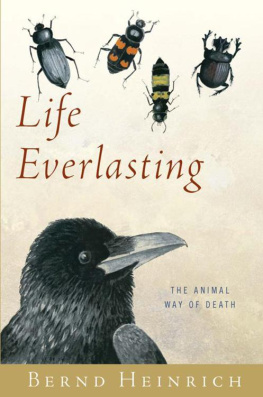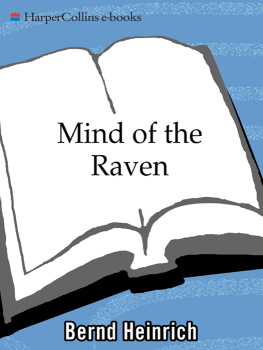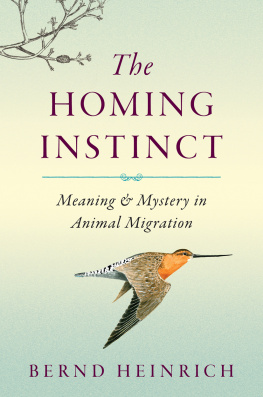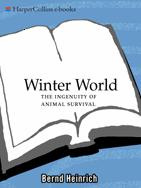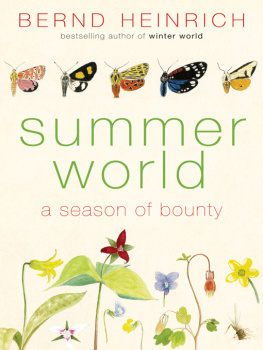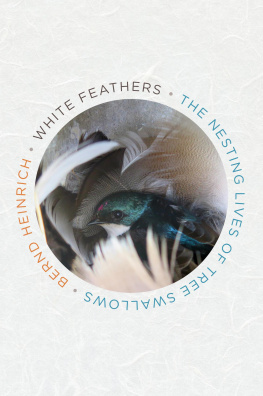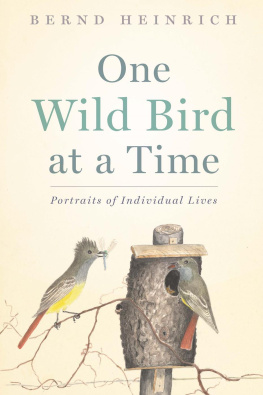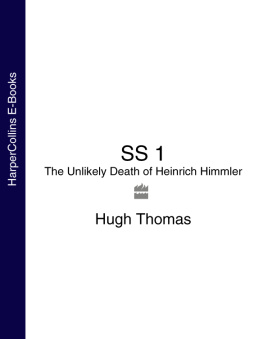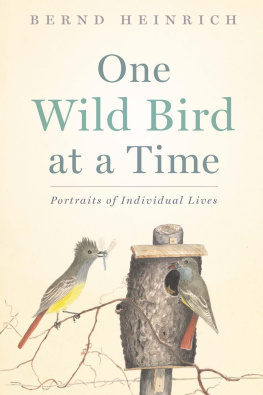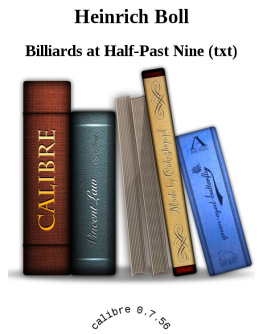
Table of Contents
Text and illustrations copyright 2012 by Bernd Heinrich
All rights reserved
For information about permission to reproduce selections from this book, write to Permissions, Houghton Mifflin Harcourt Publishing Company, 215 Park Avenue South, New York, New York 10003.
www.hmhbooks.com
Library of Congress Cataloging-in-Publication Data
Heinrich, Bernd, date
Life everlasting: the animal way of death / Bernd Heinrich.
p. cm.
ISBN 978-0-547-75266-2 (hardback)
1. Animal ecology. 2. Animal life cycles. 3. AnimalsPsychological aspects. 4. Animal behavior. 5. Animal communication. I. Title.
QH 541.13. H 45 2012
591.7dc23
2012010583
Book design by Lisa Diercks
Text set in Miller
Printed in the United States of America
DOC 10 9 8 7 6 5 4 3 2 1
Introduction
If you would know the secret of death you must seek it in the heart of life.
Kahlil Gibran, The Prophet
.... Earths the right place for love; I dont know where its likely to go better.
Robert Frost, Birches
Yo, Bernd
Ive been diagnosed with a severe illness and am trying to get my final disposition arranged in case I drop sooner than I hoped. I want a green burialnot any burial at allbecause human burial is today an alien approach to death.
Like any good ecologist, I regard death as changing into other kinds of life. Death is, among other things, also a wild celebration of renewal, with our substance hosting the party. In the wild, animals lie where they die, thus placing them into the scavenger loop. The upshot is that the highly concentrated animal nutrients get spread over the land, by the exodus of flies, beetles, etc. Burial, on the other hand, seals you in a hole. To deprive the natural world of human nutrient, given a population of 6.5 billion, is to starve the Earth, which is the consequence of casket burial, an internment. Cremation is not an option, given the buildup of greenhouse gases, and considering the amount of fuel it takes for the three-hour process of burning a body. Anyhow, the upshot is, one of the options is burial on private property. You can probably guess whats coming... What are your thoughts on having an old friend as a permanent resident at the camp? I feel great at the moment, never better in my life in fact. But its always later than you think.
This letter from a friend and colleague compelled me toward a subject I have long found fascinating: the web of life and death and our relationship to it. At the same time, the letter made me think about our human role in the scheme of nature on both the global and the local level. The camp referred to is on forest land I own in the mountains of western Maine. My friend had visited me there some years earlier to write an article on my research, which was then mostly with insects, especially bumblebees but also caterpillars, moths, butterflies, and in the last three decades, ravens. I think it was my studies of ravens, sometimes referred to as the northern vultures, that may have motivated him to write me. The ravens around my camp scavenged and recycled hundreds of animal carcasses that friends, colleagues, and I provided for them there.
My friend knows we share a vision of our mortal remains continuing on the wing. We like to imagine our afterlives riding through the skies on the wings of birds such as ravens and vultures, who are some of the more charismatic of natures undertakers. The dead animals they disassemble and spread around are then reconstituted into all sorts of other amazing life throughout the ecosystem. This physical reality of nature is for both of us not only a romantic ideal but also a real link to a place that has personal meaning. Ecologically speaking, this vision also involves plants, which makes our human role in nature global as well.
The science of ecology/biology links us to the web of life. We are a literal part of the creation, not some afterthoughta revelation no less powerful than the Ten Commandments thrust upon Moses. According to strict biblical interpretations, we are dust [that shall] return to the earth as it was: and the spirit shall return unto God who gave it (Ecclesiastes 12:7); thou return unto the ground; for out of it thou wast taken; for dust thou art and unto dust shalt thou return (Genesis 3:19).
The ancient Hebrews were not ecologists, however. If the famous lines from Genesis and Ecclesiastes had been stated with scientific precision, they would not have been understood for two thousand years; not one reader would have been ready for the concept. Dust was a metaphor for matter, earth, or soil. But in our minds the word dust suggests mere dirt. We came from and return to just dirt. No wonder early Christians belittled our physical existence and sought separation from it.
But in fact we do not come from dust, nor do we return to dust. We come from life, and we are the conduit into other life. We come from and return to incomparably amazing plants and animals. Even while we are alive, our wastes are recycled directly into beetles, grass, and trees, which are recycled further into bees and butterflies and on to flycatchers, finches, and hawks, and back into grass and on into deer, cows, goats, and us.
I do not claim originality in examining the key role of the specialized undertakers that ease all organisms to their resurrection into others lives. I do believe, however, that many readers are willing to examine taboos and to bring this topic into the open as something relevant to our own species. Our role as hominids evolving from largely herbivorous animals to hunting and scavenging carnivores is especially relevant to this topic; our imprint has changed the world.
The truism that life comes from other life and that individual death is a necessity for continuing life hides or detracts from the ways in which these transformations happen. The devil, as they say, is in the details.
Recycling is perhaps most visibleas well as dramatic and spectacularin large animals, but far more of it occurs in plants, where the most biomass is concentrated. Plants get their nutrients from the soil and the air in the form of chemicalsall bodies are built of carbons linked together, later to be disassembled and released as carbon dioxidebut nevertheless they are still living off other life. The carbon dioxide that plants take up to build their bodies is made available through the agency of bacteria and fungi and is sucked up massively and imperceptibly from the enormous pool of past and present life. The carbon building blocks that make a daisy or a tree come from millions of sources: a decaying elephant in Africa a week ago, an extinct cycad of the Carboniferous age, an Arctic poppy returning to the earth a month ago. Even if those molecules were released into the air the previous day, they came from plants and animals that lived millions of years ago. All of life is linked through a physical exchange on the cellular level. The net effect of this exchange created the atmosphere as we know it and also affects our climate now.
Carbon dioxide, as well as oxygen, nitrogen, and the other molecular building blocks of life, are exchanged freely from one to all and all to one daily on a global scale, wafted and stirred throughout the atmosphere by the trade winds, by hurricanes and breezes. Molecules that have long been sequestered in soil may be exchanged within the local community over a long time. Plants are made from building blocks derived from centipedes, gorgeous moths and butterflies, birds and mice, and many other mammals, including humans. The ingestion of carbon by plants is really a kind of microscopic scavenging that happens after intermediaries have disassembled other organisms into their molecular parts. The process differs in method from that of a raven eating a deer or a salmon, whose meat is then spread through the forest in large and not yet fully disassembled packets of nitrogen, but it does not differ in concept.
Next page
